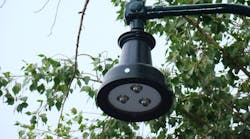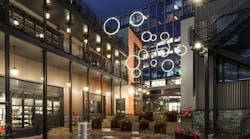Acuity Brands has deployed a free web-based tool called the Visual Economic Tool that can be used to compare the life-cycle costs of different types of lighting systems. For a given application, the tool can be used to compare systems which use LED, fluorescent, and metal-halide sources. Acuity asserts that the tool goes beyond the widely-available simple payback calculators. The tool can be used to compare systems based on a simple measure of energy costs, or it can go much deeper and factor in maintenance costs, savings attributable to adaptive controls, and even savings in air conditioning costs associated with cooler running sources such as LEDs.
The tool uses economic-analysis standards specified by the Illuminating Engineering Society of North America. Comparing Acuity products is as simple as choosing the target products from a menu, or required data can be input from competitors' product data sheets.
For a different look at life-cycle comparisons, consider the DOEs new report focused on LED, CFL, and incandescent lamps entitled “LED Manufacturing and Performance.” The new report builds on earlier DOE work focused on life-cycle energy cost for the different sources, and adds an examination on the cost of fabricating, shipping, operating, and disposing of the competing technologies. Generally, LEDs prove to be the winner, although the DOE noted that the large aluminum heat sinks used with many LED lamps results in CFL lamps being slightly better in the category of landfill waste.
The United Nations also weighed in on the subject of energy-efficient lighting via its en.lighten initiative targeted at developing and middle-income countries around the globe. The UN stated that 5% of global energy consumption could be cut per year via more-efficient lighting resulting in worldwide savings of $110 billion. The statements came at the UN Conference on Sustainable Development called Rio+20 and emphasized social as well as economic benefits.
China is one country that doesn't need to be prodded toward a solid-state lighting transition. Cree just announced completion of another China street light project in the Beibei district of Chongqing that included 20,000 street lights. The project consumed almost 2 million Cree LEDs, and will save 17.6 million kilo watt hours of energy annually.




